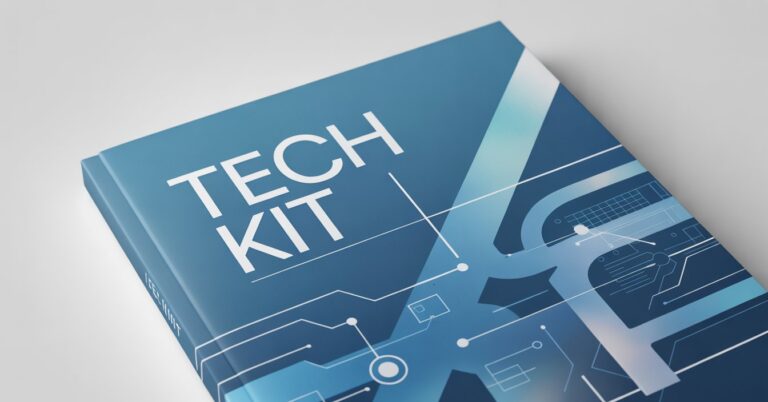How Law Firms Can Build a Compliance Framework for AI Governance and Risk
The race to automate has outpaced the rules. Across the United States, law firms are adopting generative AI tools to draft documents, summarize discovery, and analyze judges faster than any associate could. But behind the acceleration lies a vacuum of governance. Policies lag behind pilots, risk assessments follow rollout, and “trust but verify” has given way to “ship and hope.” The result is a profession deploying systems it barely understands, and one that regulators are now watching closely.
From Experimentation to Expectation
The American Bar Association’s Formal Opinion 512 (July 2024) made explicit what had been implied for years: competence and confidentiality apply equally to machines. Lawyers must understand the capabilities, limitations, and risks of any artificial-intelligence system they use in practice. That mandate turned experimentation into expectation. AI may accelerate work, but it cannot excuse negligence.
At the state level, lawmakers are setting the outer boundary. Colorado’s SB 24-205 (signed May 2024, effective June 30 2026) governs “high-risk AI systems” that make consequential decisions. Though aimed at consumer protection, its disclosure and risk-management obligations foreshadow standards that could migrate into professional services. California’s SB 524 (signed Oct. 2025, effective Jan. 1, 2026) now requires police to disclose when AI helps draft reports and to retain every original AI-generated draft. It’s a small but telling sign that accountability is moving upstream, from courts to code.
Together these measures trace the outline of a coming compliance era. What cybersecurity rules were to 2015, AI-governance frameworks will be to 2026: the new baseline for professional credibility.
Building the Compliance Architecture
Effective AI compliance begins not with software but with structure. A credible framework mirrors corporate-governance models: clear roles, documented oversight, and verifiable controls. At minimum, firms should establish three pillars: policy, supervision, and evidence.
1. Governance and Oversight. Appoint an AI risk officer or designate an ethics partner responsible for every approved tool. Create a standing AI committee that includes partners, technologists, and compliance staff. Every deployment, whether a contract-review bot or litigation-analytics dashboard, should pass through this gate before touching client data.
2. Written Policies. Document what AI systems may be used for, what data they may process, and who must review outputs. Cross-reference Rule 1.6 (confidentiality) and Rule 5.3 (supervision). The moment a machine performs substantive legal work, it becomes a non-lawyer assistant under ethics law.
3. Audit and Accountability. Maintain an internal AI register listing each vendor, system purpose, and risk classification. Track when models are updated and who authorized use. These records will form the “paper trail of diligence” once insurers and regulators start asking for proof rather than promises.
This three-pillar model converts abstract compliance into operational behavior. It also transforms ethical aspiration into defensible evidence, a lesson learned painfully after Mata v. Avianca (2023), where a hallucinated brief cost a firm sanctions and credibility in one stroke.
From Policy to Practice
Compliance must be auditable in code as well as conduct. The NIST AI Risk Management Framework (2023) provides a national template emphasizing traceability, transparency, and testing. Firms can adapt its structure to legal workflows by documenting data sources, training parameters, and validation results for every AI tool.
Key safeguards include:
- Prompt logging and version control: retain all original inputs and model outputs; note any human edits or re-runs.
- Data-loss prevention filters: block uploads of privileged material to public or non-contracted models.
- Testing protocols: evaluate systems quarterly for accuracy, bias, and reproducibility, documenting variance over time.
- Access tiers: limit generative tools to non-confidential matter unless sandboxed or client-consented.
These measures align with ISO/IEC 42001, the first international management-system standard for AI governance. Its emphasis on continuous improvement suits law firms well: every prompt, every policy revision, every audit cycle becomes a compliance artifact.
Finally, governance must extend beyond internal workflows to the systems and vendors that enable them. Vendor due diligence has become an essential part of responsible AI adoption. Rule 1.6 requires firms to preserve client confidentiality even when information is shared with a third party, and that duty extends to AI providers.
Firms should conduct structured reviews of each vendor’s ownership, security posture, and data-use policies. Contracts should include warranties that prohibit training on client data and require immediate notice of any breach.
Data residency must also be verified, confirming where and how information is stored and processed to comply with cross-border laws such as the GDPR or client-specific mandates. Each entry in the AI Register should record a vendor’s security and compliance certifications, including SOC 2, ISO 27001, and any relevant jurisdictional audits.
Client Disclosure and Consent
Transparency with clients is no longer a courtesy, but a risk-management requirement. Under Rule 1.4, lawyers must keep clients informed about material aspects of representation. When generative AI assists in research, drafting, or document review, disclosure ensures clients understand both the efficiencies and the limits. Engagement letters should specify the nature of AI use, the systems employed, and the human-review process verifying outputs.
Some clients, particularly in finance or health care, may prohibit external data processing entirely. Others will demand written confirmation that prompts and work product are excluded from model training. A standardized disclosure clause, paired with an opt-out for sensitive matters, can avoid conflicts later characterized as hidden automation. Ethical transparency becomes contractual clarity.
Insurance, Liability, and the New Standard of Care
Malpractice carriers have begun adjusting to the algorithmic era. Several insurers now ask whether firms maintain an AI-use policy or audit log before underwriting. Others are drafting exclusions for unverified AI output. The question is shifting from hypothetical risk to measurable governance: can a firm prove it verified the machine’s work?
In the wake of Mata v. Avianca, diligence has become demonstrable behavior. Verification checklists, model-accuracy records, and internal sign-offs can all serve as evidence of reasonableness under Rule 1.1. In the future, malpractice discovery may include prompt histories alongside email chains. “Did you verify this output?” could soon echo the familiar “Did you cite-check this case?”
Professional-liability exposure is only one dimension. Contractual warranties to clients, particularly in e-discovery or transactional due-diligence work, may already imply human review. Absent documented oversight, a firm risks breaching its own representation of accuracy. Governance therefore functions as both shield and receipt: proof that the firm controlled, not merely consumed, the technology.
Global Mandates
The United States remains largely self-regulated, but the rest of the world is codifying what “responsible AI” means. The European Union AI Act classifies predictive, legal-decision, and law-enforcement systems as “high-risk,” requiring human oversight, documentation of data sources, and fairness testing before deployment. Its risk-tier model offers a ready taxonomy for law-firm policy design.
The OECD’s 2024 report Governing with Artificial Intelligence: Are Governments Ready? urges public institutions to build AI systems that are transparent, accountable, and subject to independent oversight. Its recommendations on procurement, audit independence, and human-in-the-loop design have clear parallels in legal operations. In the United Kingdom, the Solicitors Regulation Authority has likewise emphasized that lawyers remain responsible for outcomes produced by automated tools and must ensure appropriate supervision and transparency when using AI in legal services.
These foreign precedents function as early-warning mechanisms. Multinational clients often hold their outside counsel to the highest regulatory bar among jurisdictions in which they operate. A U.S. firm handling European data or U.K. discovery cannot rely on domestic minimalism; it must demonstrate EU-level governance. The most adaptable firms are adopting hybrid frameworks that combine U.S. ethics rules for duty, European models for documentation, and ISO/IEC 42001 for technical control.
Culture of Continuous Oversight
Governance succeeds only when embedded in culture. Leading firms treat AI oversight like financial compliance: ongoing, auditable, and leadership-driven. They establish internal “AI academies,” appoint ethics liaisons in each practice group, and schedule quarterly model-review sessions. The goal is not perfection but proof of vigilance.
That vigilance extends beyond policy to include training lawyers to spot bias, hallucination, and data leakage; maintaining cross-functional teams of technologists and partners; and documenting every significant system change. The Council on Criminal Justice Task Force on Artificial Intelligence (October 2025) captured the ethos succinctly in that accountability must evolve alongside automation. Law firms that internalize that message will meet the next wave of regulation from a position of strength, not surprise.
Designing for Trust
AI governance in law is not a technology project; it is a credibility project. The firms that document oversight, demand transparency from vendors, and train their lawyers in algorithmic literacy will control the narrative when regulators arrive. Those that do not will be defined by their first compliance failure. The transition from enthusiasm to accountability is already under way, and the next twelve months will determine which firms lead it.
In practice, the path forward resembles the evolution of financial compliance two decades ago. Sarbanes–Oxley transformed “trust us” into “prove it.” The same logic now applies to AI. Every model approval, audit trail, and human review log is institutional memory. Documentation converts good intentions into admissible diligence.
Legal culture will adapt as it always has, by reinterpreting old principles for new tools. Confidentiality now includes metadata. Competence now includes model literacy. Supervision now includes automation. The lawyer’s role is still judgment, but judgment now requires understanding the limits of code. As machines take on the work of drafting and analysis, the mark of professionalism will be not how fast the work is done but how responsibly it was verified.
Ultimately, AI compliance is less about regulation than reputation. The profession’s legitimacy rests on public confidence that human judgment remains in control. The challenge for law firms is to turn governance into habit, proof that trust in legal counsel can survive the algorithmic age.
Sources
- American Bar Association: “Formal Opinion 512: Generative Artificial Intelligence Tools” (July 29, 2024)
- American Bar Association: “Model Rule 1.1: Competence”
- American Bar Association: “Model Rule 1.6: Confidentiality of Information”
- American Bar Association: “Model Rule 5.3: Responsibilities Regarding Nonlawyer Assistance”
- California Legislature: “SB 524: Law Enforcement Agencies: Artificial Intelligence” (2025)
- Colorado General Assembly: “Senate Bill 24-205: Consumer Protections for Artificial Intelligence” (Signed May 17, 2024; Effective June 30, 2026)
- Council on Criminal Justice: “Task Force on Artificial Intelligence: Guiding Principles Framework” (October 2025)
- European Commission: “AI Act – Shaping Europe’s Digital Future” (2024)
- International Organization for Standardization: “ISO/IEC 42001 – AI Management System Standard” (2023)
- Mata v. Avianca, Inc., 2023 WL 4114965 (S.D.N.Y. June 22, 2023)
- National Institute of Standards and Technology: “AI Risk Management Framework” (January 2023)
- Organisation for Economic Co-operation and Development: “Governing with Artificial Intelligence: Are Governments Ready?” (June 2024)
- Solicitors Regulation Authority (UK): “Risk Outlook Report: The Use of Artificial Intelligence in the Legal Market” (2023)
This article was prepared for educational and informational purposes only. It does not constitute legal advice and should not be relied upon as such. All statutes, opinions, and frameworks cited are publicly available through official publications and reputable outlets. Readers should consult professional counsel for specific compliance or governance questions related to AI use.
See also: Data Provenance Emerges as Legal AI’s New Standard of Care







